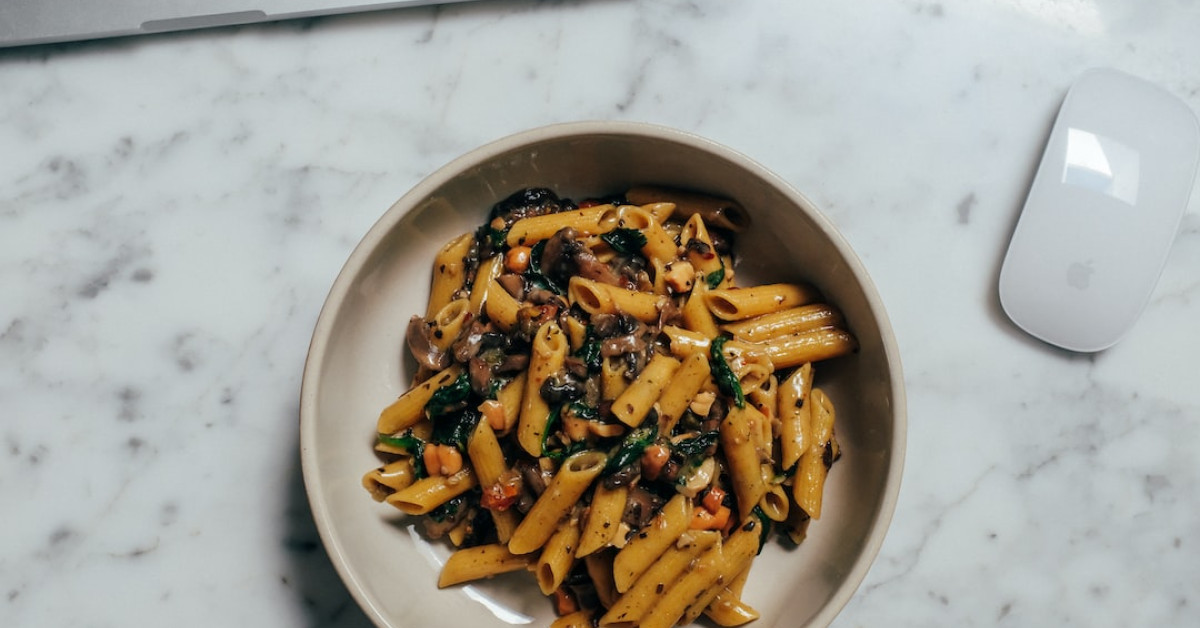Embark on a culinary adventure that doesn’t compromise on taste or ethics with our vegetarian chickpea meatballs. These mouthwatering morsels pack a punch of flavor, thanks to the umami richness of miso and the hearty texture of chickpeas. As more people embrace plant-based diets, the quest for satisfying and nutritious alternatives to traditional meat dishes has led to innovative creations like the one we’re delighted to share with you today.
Whether you’re a committed vegetarian, a Meatless Monday enthusiast, or simply looking to expand your palate, our chickpea and miso meatballs are sure to become a staple in your kitchen. Not only are these meatballs a breeze to whip up, but they’re also incredibly versatile. Serve them over spaghetti, nestled in a sub roll, or as the star of your next cocktail party spread. Moreover, with every bite, you’re making a choice that’s kinder to the planet and to your body.
In this article, we will walk you through the steps to create these delicious vegetarian meatballs, share the nutritional benefits of the ingredients, and offer tips to make your cooking experience as seamless as possible. So, let’s dive in and explore this game-changing recipe that promises to turn even the most skeptical of carnivores into plant-based converts! the bold and the beautiful latest news
Crafting the Perfect Vegetarian Meatball: A Step-by-Step Recipe
Perfecting the art of vegetarian meatballs involves combining the right blend of flavors and textures. Chickpeas, with their nutty taste and firm structure, provide a superb base, while miso, a fermented soybean paste, infuses the meatballs with a deep, savory note. Here’s the blueprint to creating this sumptuous dish.
Ingredients List:
- 2 cups cooked or canned chickpeas, drained and rinsed
- 1/4 cup miso paste
- 1/2 cup breadcrumbs
- 1/4 cup finely chopped fresh parsley
- 2 cloves garlic, minced
- 1 small onion, finely diced
- 1 tablespoon soy sauce or tamari for a gluten-free option
- 1/2 teaspoon smoked paprika
- 1/2 teaspoon ground black pepper
- 1 egg or flax egg for a vegan alternative
- 2 tablespoons olive oil, plus more for frying
Instructions:
Making the Mixture:
- Place the chickpeas in a food processor and pulse until coarsely mashed, yet still with some texture.
- Transfer the chickpeas to a large mixing bowl and add the miso paste, breadcrumbs, parsley, garlic, and onion, mixing well to combine.
- Stir in the soy sauce, smoked paprika, and black pepper.
- Incorporate the egg or flax egg into the mixture until everything comes together into a moldable consistency.
Shaping and Cooking:
- Heat a skillet over medium heat and add a drizzle of olive oil.
- While the skillet heats, shape the chickpea mixture into meatballs, using about a tablespoon of the mixture for each.
- Place the meatballs in the skillet, cooking them in batches if necessary to avoid overcrowding.
- Fry each batch of meatballs for about 10 minutes, turning occasionally until they are golden brown on all sides.
Serve hot with your choice of pasta, sauce, or dipping condiment.
Why Choose Vegetarian Meatballs?
The global shift toward plant-based diets isn’t a fleeting trend; it’s rooted in a growing awareness of health and environmental concerns. By choosing vegetarian options like these chickpea miso meatballs, you’re embracing a lifestyle that holds profound benefits.
Health Advantages:
- High in Fiber: Chickpeas are a fantastic source of dietary fiber, crucial for digestive health.
- Rich in Proteins: As a plant-based protein powerhouse, chickpeas can help meet your protein needs without relying on meat.
- Loaded with Nutrients: Chickpeas and miso contain vitamins and minerals such as iron, potassium, and magnesium.
Environmental Impact:
- Lower Carbon Footprint: Plant-based meals typically have a smaller carbon footprint than those containing meat.
- Conserves Water: It requires significantly less water to produce crops like chickpeas compared to raising livestock.
- Promotes Biodiversity: Diverse plant-based agriculture can help maintain a variety of species and ecosystems.
The Power of Miso
Miso, a traditional Japanese seasoning produced by fermenting soybeans with salt and a koji culture, is not just a flavor enhancer; it’s a nutritional treasure trove. The fermentation process gives rise to numerous health benefits, including probiotics that are essential for gut health. High in antioxidants and linked to heart health, adding miso to dishes like our vegetarian meatballs isn’t just a taste decision, it’s a health-conscious one.
The Magic of Fermentation:
- Probiotics: Supports a healthy gut microbiome.
- Digestive Enzymes: Assists in breaking down food and absorbing nutrients.
- Enhanced Flavor: Fermentation develops complex, umami-rich profiles.
Mastering Texture and Flavor
Achieving the ideal texture and depth of taste in vegetarian dishes is a culinary art. With chickpea miso meatballs, a slew of spices and herbs come into play, as does the method of preparation. Let’s delve into the nuances of getting that perfect bite.
Textural Integrity:
Ensuring your meatballs hold together and offer a satisfying chew involves a delicate balance of wet and dry ingredients. The breadcrumbs and egg or flax egg provide binding, while the chickpeas themselves need to be processed to a point where they’re not too smooth or too chunky.
Flavor Fusion:
It’s vital to layer flavors to achieve a rich, meaty taste in vegetarian cuisine. Miso paste brings salty, earthy notes, while smoked paprika adds a touch of smokiness. Garlic and onions serve as foundational flavors, and the addition of soy sauce deepens the umami quality essential in replicating the savory profile you’d expect from meatballs.
Vegetarian Meatballs in Action: Serving Suggestions
Now that you have your vegetarian chickpea miso meatballs ready, it’s time to think about presentation. Here’s how you can incorporate these meatballs into various meals and occasions:
- Pasta Night: Toss them in a robust tomato sauce over a bed of al dente spaghetti.
- Sub Sandwich: Nestle them in a warm hoagie roll with marinara and melted mozzarella.
- Appetizer Affair: Arrange them on a platter with a tangy dipping sauce for a crowd-pleasing starter.
Nutritional Breakdown
Understanding the nutritional value of your meals is essential. Here’s a closer look at how these vegetarian meatballs stack up:
- Calories: Moderate, making them suitable for a weight-management diet.
- Macronutrients: A balanced mix of carbohydrates, protein, and healthy fats.
Adapting the Recipe: Substitutions and Variations
Flexibility is key in cooking, and our recipe can be tweaked to accommodate different dietary preferences and available ingredients.
Substitutions:
- Gluten-Free: Swap breadcrumbs for a gluten-free alternative and use tamari instead of soy sauce.
- Vegan: Opt for a flax egg rather than a traditional egg.
- Nut-Free: Ensure all ingredients, like soy sauce, are free from nut contaminants.
Variations:
- Herb Twist: Add oregano, basil, or rosemary for a Mediterranean flair.
- Spice It Up: Incorporate chili flakes or cumin for some heat.
Comparing Vegetarian Meatballs: Chickpea Miso vs. Other Alternatives
When it comes to vegetarian meatballs, not all alternatives are created equal. Here is a side-by-side comparison between chickpea miso meatballs and other popular options:
| Ingredient | Chickpea Miso Meatballs | Lentil Meatballs | Mushroom Meatballs |
|---|---|---|---|
| Protein Content | High | Moderate | Low |
| Flavor Profile | Rich, Umami | Earthy, Nutty | Deep, Savory |
| Texture | Firm, Meaty | Soft, Grainy | Dense, Mushy |
| Ease of Preparation | Simple | Moderate | Complex |
| Diet Compatibility | Vegetarian/Vegan | Vegetarian/Vegan | Vegetarian |
Closing Thoughts: Embrace the Plant-Based Revolution
In crafting these vegetarian chickpea miso meatballs, you’re choosing a path that’s not only delectable but also responsible—a path that respects your health, the environment, and our fellow creatures. Whether you’re planning a cozy family dinner or prepping for a lively gathering, these meatballs will undoubtedly impress and satisfy.
As we continue to explore the vast culinary landscape that plant-based cooking offers, dishes like these serve as reminders that flavor and ethics need not be mutually exclusive. So, take this recipe, make it your own, and savor the rich, satisfying taste of vegetarian chickpea miso meatballs.
Happy Cooking!










